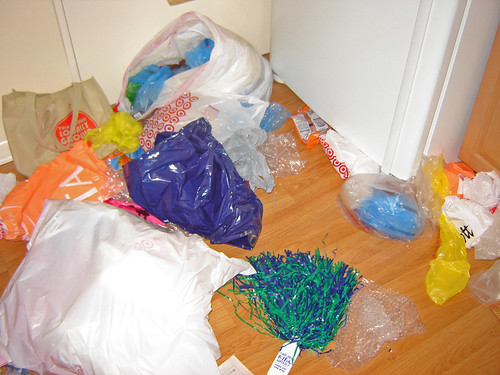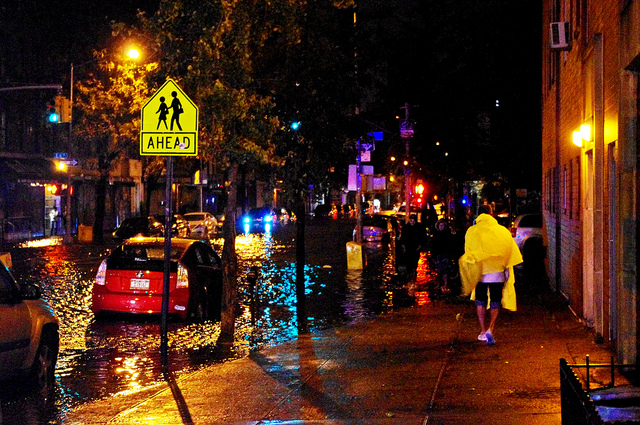
Led by Ireland’s nation-wide tax on single-use plastic bags implemented in 2002, which lowered the use of plastic bags by more than 90%, several large American municipalities have implemented similar regulations on single-use bags distributed by retail outlets. These regulations seek to reduce waste and, often, generate revenue. The first major municipal regulation of single-use bags in America was approved in San Francisco in 2007. After a proposed fee on single-use plastic bags was preempted by California state law, San Francisco enacted a ban on the distribution of plastic bags from retailers to consumers. Seattle enacted a fee on plastic and paper bags in 2008, but that law was rejected by a referendum in the following year. Most recently, Washington, D.C. enacted a ban of non-recyclable plastic bags and a fee on most other types of plastic and paper bags. New York City considered a bag fee, but did not pass it.
The large majority of these universally available and free single-use bags end up as litter. Single-use plastic bags contribute to accumulation of litter more than any other type of bag. Not only are plastic bags much less likely to be recycled than paper bags, but are less biodegradable and more susceptible than paper bags to being blown in the wind, out of landfills or trash cans and into public space. This leads to accumulation of plastic bags in animal habitats where they are ingested and introduced into the food chain. They also accumulate in parks and rivers, contributing to aesthetic blight. As a result, many municipal bag laws target single-use plastic bags.
Yet, over the life cycle of the product, paper bags yield two to three times more greenhouse gas emissions than single-use plastic bags. Biodegradable plastic bags, which require significant amounts of energy to produce, contribute even more emissions. Reusable bags made from non-woven polypropylene make the smallest GHG contribution of any type of bag, saving emissions after just eleven uses. Other types of reusable bags also contribute less to emissions than single-use bags if frequently reused.
Municipal authorities should consider GHG emissions in addition to aesthetic blight when regulating single-use bags. A wide range of policy options is available to achieve these goals, including bans on certain types of bags, fees on bags at the point of distribution, credits given at the point of distribution for reusable bags, and recyclable content standards for single-use bags.
A ban on all single-use bags would effectively encourage use of reusable bags. Such a ban has been enacted in at least one American municipality. However, such a regulation may be difficult to pass in many municipalities.
A ban on single-use plastic bags only, as San Francisco has implemented, would alleviate litter, but its broader environmental impact should be carefully considered before adoption. A proposed California state law bans single-use plastic bags and taxes single-use paper bags. While this law may increase the use of paper bags, the paper bag fee could sufficiently encourage use of reusable bags to make the litter eliminated worth the lost opportunity to reduce emissions.
In Washington, D.C., a five cent fee is charged for both single-use plastic and paper bags. Empirical analysis suggests that such a fee would lead to a 50% reduction in GHG emissions related to single-use bags and early indications show that the tax has lowered bag usage from 22.5 million bags per month to about 3 million bags per month. The ordinance requires paper bags to contain at a minimum 40% post-consumer recycled content and also encourages retailers to credit customers five cents for providing their own reusable bags. The city’s income from the fee is designated toward cleaning the Anacostia River, which is heavily littered with plastic bags, making the political argument in favor of the law stronger and bolstering its environmental strength.
The D.C. law is a good model for other municipalities. Early signs indicate that bag use is down and the law does not encourage use of paper bags. However, its experience has not been worry-free, even in the first few months. The D.C. law has been criticized for being ambiguous in its coverage and the city needed to issue regulations less than a month after the fee was implemented. The law covers single-use bags distributed at food stores. However, questions have arisen about what constitutes a food store. For example, a clothing store that also sells mints at the checkout counter could be considered to be selling food. However, these issues could be resolved by better statutory drafting and should not be considered a serious impediment to fees on single-use bags.
Like most new taxes or fees, the idea of a bag fee is often met with concerns about its impact on working families and low-income communities. Washington, D.C. attempted to deflect some of these criticisms by giving away reusable bags. The 5-cent fee is near the minimum amount that a fee should be in order to have a tangible impact on bag usage, so lowering it further would undermine the fee’s purpose.
Municipalities should also take into consideration the possible legal challenges to any proposed bag law. Plastics industry interests have presented legal challenges to bag laws, particularly in California. In Save the Plastic Bag Coalition v. City of Manhattan Beach (181 Cal.App.4th 521 (2010)), for example, industry interests successfully argued that the environmental impact of increased paper production caused by plastic bag bans triggers review of the ban under the state’s little NEPA statute, the California Environmental Quality Act. A similar challenge was made in New York in the case of Society of Plastics Industry, Inc. v. County of Suffolk (154 A.D.2d 179 (N.Y. App. Div. 1990), rev’d, 573 N.E.2d 1034 (N.Y. 1991)). Plaintiffs attempted to void a prohibition on the use of certain plastics on the grounds that the potential negative environmental impact of the law, largely related to increased paper production, required the county legislature to prepare an Environmental Impact Statement under New York’s little NEPA statute, the State Environmental Quality Review Act. However, the court held that plaintiffs lacked standing to challenge the law under SEQRA and dismissed the complaint.
Placing exclusive scrutiny on just the litter caused by single-use plastic bags or just increased GHG emissions caused by paper bags is inadvisable. Emissions reduction does not always override all other policy concerns, but the impact of a law on emissions, particularly an environmental law, should be carefully considered before implementation and the various interests and impacts should be balanced. Furthermore, only reusable bags comprehensively reduce environmental impact, so any policy should be formed with promotion of reusable bags in mind.
(Empirical information related to single-use bags are sourced from the Master Environmental Assessment of single-use bags produced for Green Cities California, which compiles the results of a wide variety of studies on single-use bags.)



